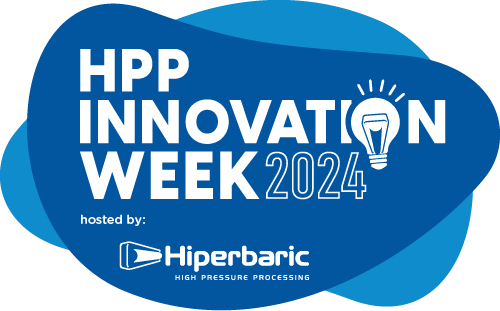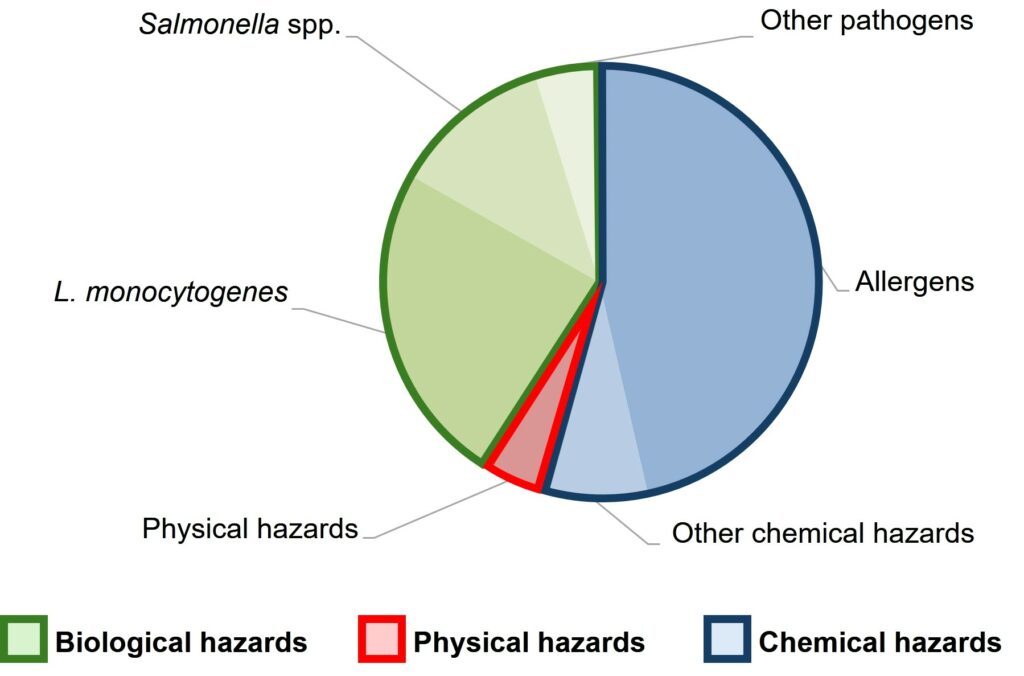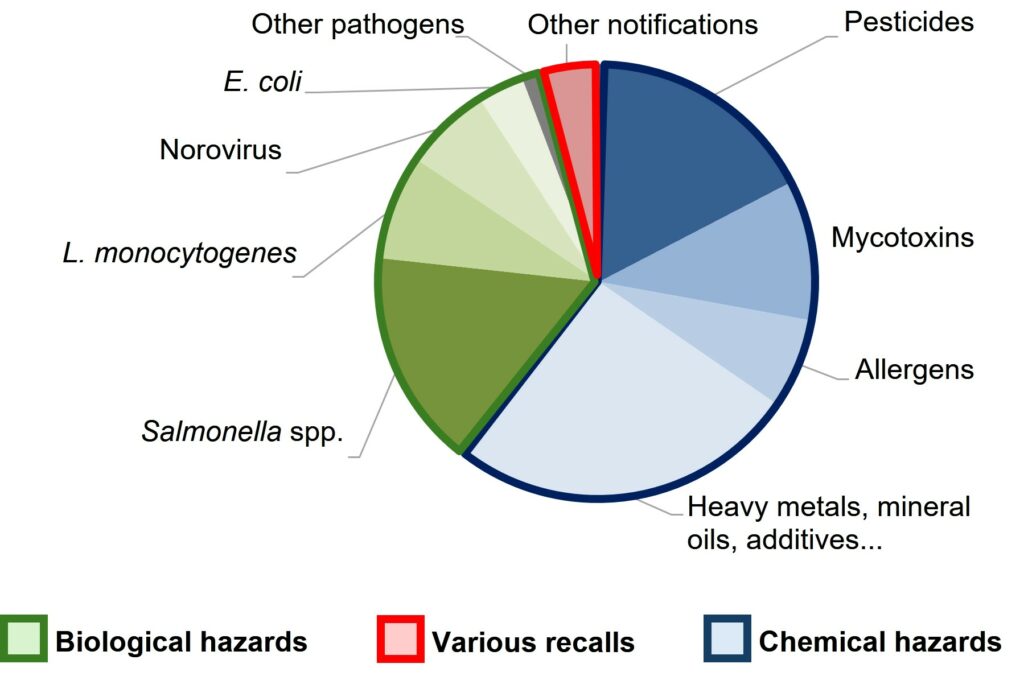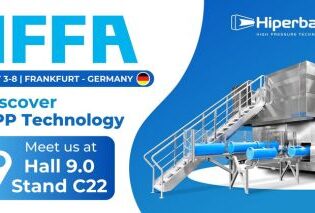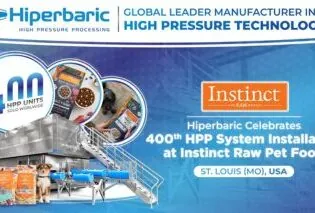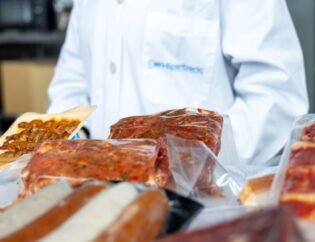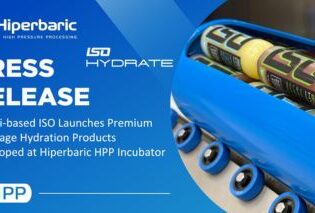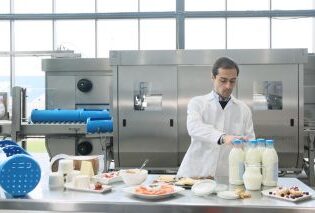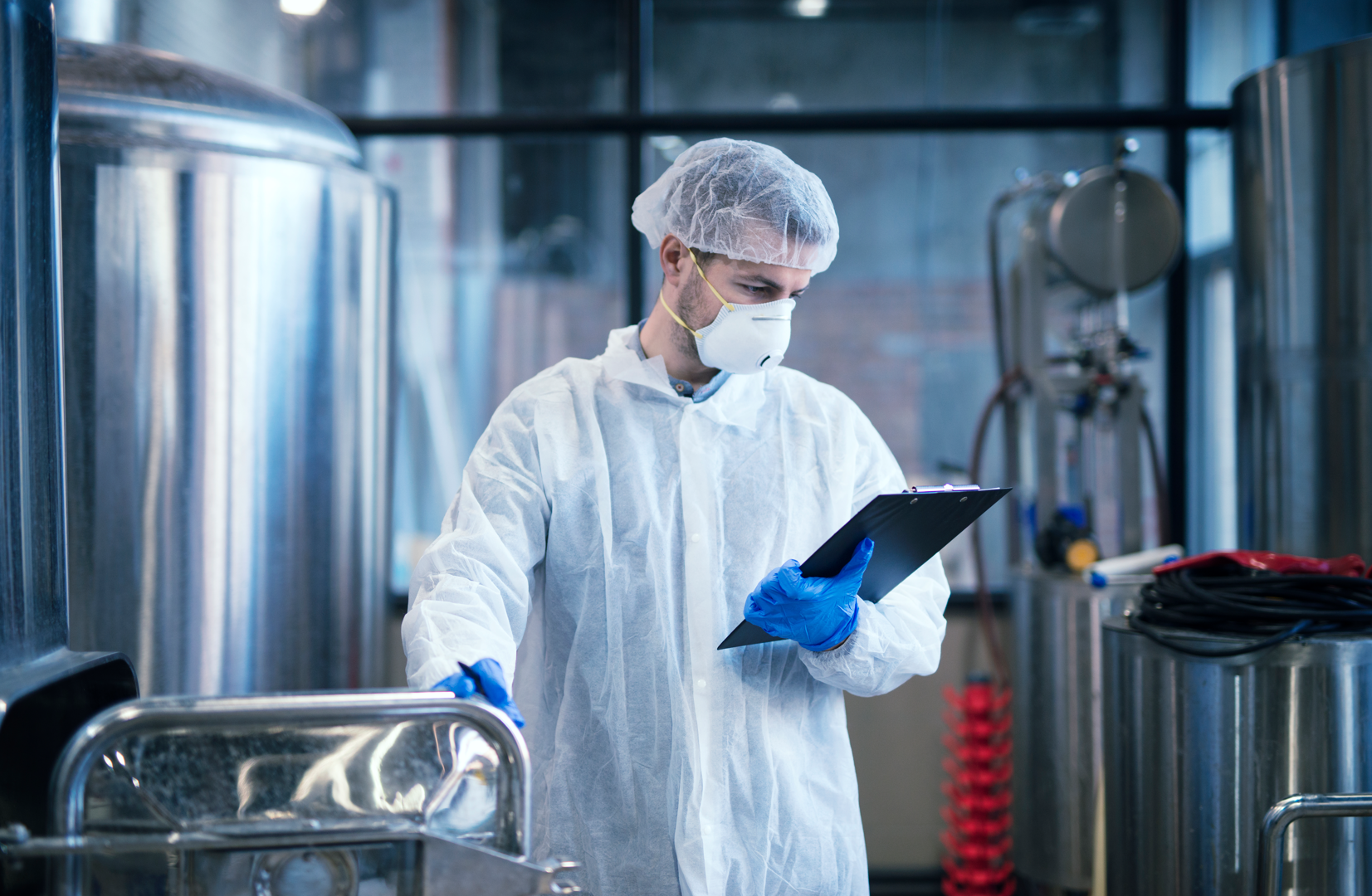
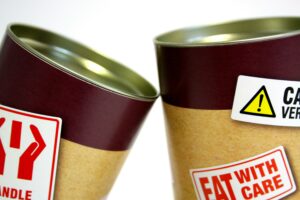
Food recalls pose significant challenges to the food industry. Beyond safety concerns, preventing recalls is vital for brand protection, customer loyalty, and business success. Even a recall free from illness and fatalities can lead to millions of lost dollars due to product withdrawal from retail or operational disruptions. To minimize these losses, companies need to identify potential hazards commonly associated with their products and establish robust food safety programs. One promising strategy is the implementation of High Pressure Processing (HPP) technology, a nonthermal method that effectively inactivates foodborne pathogens while preserving product quality.
Food recalls: when not everything is under control
Despite the proliferation of regulations aimed at safeguarding the food that consumers eat, national food safety agencies continue to issue alerts and recalls cautioning against potential hazards and associated risks in food products. In the period comprised between January and April 2024, the Food and Drug Administration (FDA) issued 125 recalls in the United States. Simultaneously, the United States Department of Agriculture (USDA) issued 23 alerts concerning the safety of meat products. During this same period, the Rapid Alert System for Food and Feed (RASFF) of the European Union issued 610 alert notifications and notifications for attention to aware member states regarding potentially hazardous food products (either imported or domestically produced within the EU).
One could debate whether the rise in the number of recalls is linked to stricter regulations, growing inspections or more lenient practices within the increasingly globalized food industry. Nevertheless, food companies face several threats if they fail at ensuring food safety:
- Financial impact
- Brand reputation damage
- Operational disruptions
- Loss of customer loyalty
- Legal consequences
Given this context, considering strategies to mitigate hazards that could lead to a recall can be viewed as an investment.
Potential hazards behind food recalls
A deeper insight into the recalls issued during the first four months of 2024 (January to April) helps to identify the causes behind, and to propose potential control strategies. The primary causal agents of alerts are chemical hazards, mainly allergens and pesticides. Over half of the recalls issued by the FDA are linked to allergens and other chemical hazards (54%, as shown in Figure 1). In the European Union, this percentage increases to 61% (Figure 2).
Good Agricultural Practices (GAPs) and adequate implementation of prerequisite programs (i.e. allergen control, facility condition, raw material sourcing and traceability) are crucial to control these hazards.
The potential presence of pathogens in food products (i.e. biological hazards) is the second leading cause of recalls issued by the FDA in the US (41%) and reported by the RASFF in the EU (35%) (Figures 1 and 2). Although less frequent, these recalls are more concerning because the public is more familiar with foodborne infections and intoxications. Salmonella spp, Listeria monocytogenes and norovirus are the most reported pathogens across a wide range of food products.
Among USDA recalls on meat products, the potential contamination with pathogens falls short of the number of undeclared allergen-related recalls (Figure 3). The potential presence of L. monocytogenes led to three recalls in the four-month period between January and April, followed by Salmonella spp. (two recalls) and E. coli (one recall).
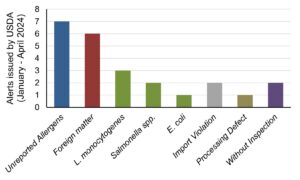
Unfortunately, some of these products end up reaching the market and cause outbreaks associated with the pathogens that contaminate them. Table 1 summarizes the outbreaks that have been reported in the US and the EU in the first four months of 2024, or existing outbreaks for which cases continue to be reported this year.
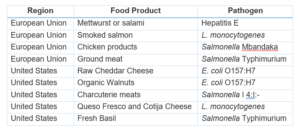
Once hazards and their associated foods are identified, proposing strategies to mitigate them becomes feasible. However, selecting the appropriate approach can be challenging due to potential quality impacts on certain products. In this context, High Pressure Processing (HPP) emerges as a valuable nonthermal food processing technology for inactivating foodborne pathogens.
How HPP helps to prevent recalls
High Pressure Processing (HPP) technology is a nonthermal method that utilizes water to pressurize a diverse range of food products within their final packaging. By subjecting the products to high pressure, microorganisms are effectively inactivated while minimizing alterations to the food’s quality attributes due to the absence of heat.
The process is accepted by food safety regulatory agencies such as the FDA (Preventive Controls For Human Food), the USDA (Log Number 03-NT004) or the European Food Safety Authority (EFSA). In this regard, EFSA published an extensive review entitled “The efficacy and safety of high-pressure processing of food”.
Based on existing scientific evidence, it is possible to conclude that HPP can control pathogens in most of the products associated with outbreaks listed in Table 1. For instance, HPP is widely used as a post-lethal intervention method for L. monocytogenes contamination in ready-to-eat foods such as cured and fermented meats (Possas et al. 2020; Bover-Cid et al. 2012). Similarly, HPP can also control pathogens on hard cheeses, a product in which the presence of the pathogen is difficult to avoid (Carminati et al. 2004).
Overall, HPP emerges as a valuable tool that can be easily integrated as a Critical Control Point (CCP) of HACCP plans to mitigate biological hazards and prevent recalls. Discover the potential of HPP in enhancing food safety at Hiperbaric’s HPP Innovation Week 2024. The event is set to occur from June 18 to June 20, 2024. The session titled “Preventing Recalls with High Pressure Processing (HPP)” will explore this topic. Don’t miss this chance to gain insights into the cutting-edge applications of HPP in the food industry. Register now for free access to the event.

